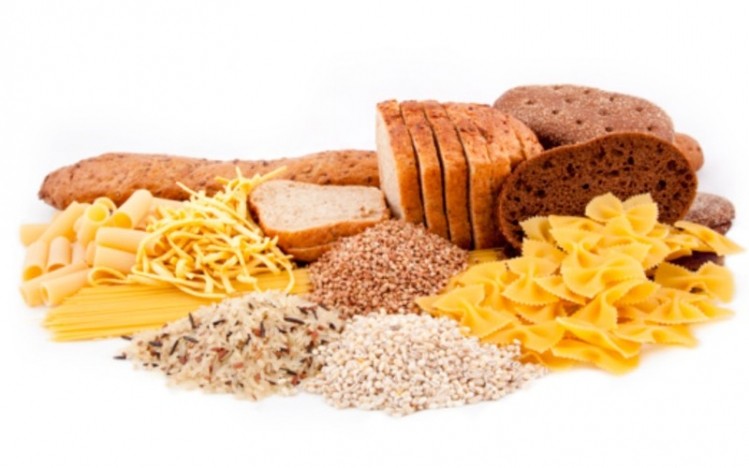Double-barreled reformulation: Food firms urged to utilise multiple GI-reduction strategies to maximise effectiveness – Singapore experts

Researchers at the Agency for Science, Technology and Research (A*STAR), Singapore’s government research arm, have called for food and beverage manufacturers based in Asia to consider going at least double-barrelled when implementing reformulation strategies in the region, according to a new study.
The study was based on a comprehensive review of strategies from over 200 prior studies that can be used for reformulating food and beverage products in order to reduce the glycaemic impact of carbohydrates.
“Type 2 diabetes is increasingly prevalent in Asia, which can be attributed to a carbohydrate‐rich diet [such as rice, noodles, steamed buns and so on] - Carbohydrates become a health issue when they are digested and absorbed rapidly (high glycaemic index), and more so when they are consumed in large quantities (high glycaemic load),” said the study authors.
“There is [also] mounting evidence to show that Asians have higher postprandial (after eating) blood glucose levels and poorer insulin sensitivity than Caucasians for the same foods ingested which puts them at greater risk of developing type 2 diabetes - Within Asians, the Malay and Indian ethnic groups also have significantly higher [such levels] compared to the Chinese.”
At the manufacturer level, some of the main product reformulation strategies include using alternative ingredients, adding functional ingredients, changing processing methods and the like, all of which aim to achieve outcomes such as reduced carbohydrate content, reduced rate of digestibility, reduced glucose absorption from the product and so on.
Importantly, the researchers highlighted that food producers in Asia need to look beyond just concentrating on any single one of these strategies when reformulating, but instead strive to go for a combination of two or more.
“A combination of two or more strategies is recommended for greater effectiveness and flexibility – [effectiveness here depending on factors such as] compatibility with an existing food product, whether it is economically or technologically feasible, etc.,” they said.
“There is no one-size-fits-all strategy for all foods and consumers [but it is ultimately crucial that] the new textural and sensorial qualities of the food are accepted by consumers.
For example, in the creation of lower-GI noodles, a simultaneous combination of strategies such as 1) using an alternative lower-GI ingredient (substituting wheat flour with plantain flour) must be complemented with the addition like functional ingredients like polyphenols and polysaccharides, depending on digestibility and functionality.
“Novel or unconventional sources of flours such as plantain with lower starch digestibility have been gaining interest [but these also usually need to be complemented with] the right functional ingredients like polysaccharides and polyphenols [to find the right] balance between starch digestibility and maintaining [texture and mouthfeel],” they said.
“[Processing methods also need to be carefully considered here, for example new] technologies such as vacuum frying may also be useful in reducing starch digestibility as compared to conventional oil frying.
“We’ve also seen that in regular pasta, the more times dough is sheeted, the more evenly distributed the protein network surrounding the starch in it is which gives lower digestibility; and for bread made of the same ingredients, steaming can lead to a lower GI (65) than baking (71) in the end product.
Some of these changes, especially to processing methods may lead to higher production costs, as these may not be achievable within existing production lines, or extra steps may be needed – but overall, food firms are advised to look at comprehensive strategies that involve more than just the simple substitution or removal of an ingredient.
Removal not the answer
The authors also stressed that in Asia, the answer to GI-reduction will never be to completely remove or significantly remove carbohydrates, such as resorting to keto diets as are picking up steam in the west, as there are many intertwining factors at play here.
“The challenge [faced] in Asia with regard to controlling carbohydrate consumption in diabetes management is that carbohydrate foods are part of the Asian culture and not just sustenance - Foods such as rice are part of the cultural identity, meal, and habits, and individuals may even choose to compromise health over food,” they said.
“[At any rate], completely removing carbohydrates/implementing low‐carbohydrate diets is also not recommended as other health functions may be impaired [and replacement with] animal‐based protein and fats may have even more adverse health effects.
“[So at the end of the day, the more] effective approach toward managing diabetes in Asia would [still] be to improve carbohydrate quality in addition to reducing carbohydrate quantity [by reformulating food products] to be reduced in GI and GL.”
Study: Reducing the glycemic impact of carbohydrates on foods and meals: Strategies for the food industry and consumers with special focus on Asia
Source: COMPREHENSIVE REVIEWS IN FOOD SCIENCE AND FOOD SAFETY
Authors: Wee, M. S. M.and Henry, C. J.






















